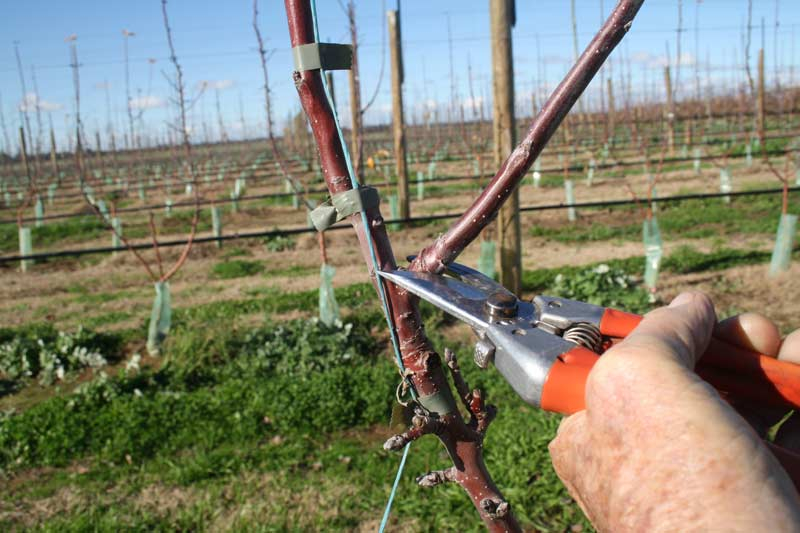Hort advisor, Paul James recently presented results from a long-term Future Orchards trial in the Adelaide Hills, South Australia.
Time of pruning
One trial looked at the time of pruning young Fuji trees to ascertain the best time to prune to optimise tree growth and yield benefits.
Four winter/spring pruning times were investigated in 2017 in a block of young fifth-leaf Aztec Fuji (x M.26) trees.
Pruning times were: after leaf fall, mid-winter, at green tip and at full bloom (10 July, August, September and October each year).
Four groups of 10 trees were selected and pruned at the appropriate time.
In 2018 the same trees were split into groups of five trees, with reverse pruning times used on one group of five trees each. This was done to try and minimise some of the effects of biennial bearing in the results.
In 2019 and 2020 pruning was undertaken at the same timing as 2018, providing four years of data in total.
Pruning time—significant effect on yield
The trial clearly showed a difference in performance based on time of pruning.
There was a 62.8 tonne/ha difference in yield over a three-year period between the best and worst yielding treatments.
The highest cumulative yield treatment was a pruning time of 10 August every year. The lowest cumulative yield treatment was a pruning time of 10 July in the first year, then 10 Sept in the following years.
No visual differences in fruit quality were observed (but no measurements made).
Tree growth characteristics were also measured. There were no major differences observed in the growth characteristics of the trial trees between treatments.
The trial has shown that timing of when a particular variety is pruned can have a significant impact on the performance of that variety.
Young tree growth trial
The objective of this trial was to observe from planting, the influence of different tree training methods on the performance of young Aztec Fuji trees.
Four replicates of six different tree training methods were used to establish Aztec Fuji trees on M.26 rootstocks.
Trees were planted in 2014 at a spacing of 3.5m x 1m. The six treatments were:
• planted as received from the nursery, with no limb removal or adjustment
• at planting—all side limbs removed (whipped), with no heading
• at planting—all side limbs removed (whipped), no heading, re-whipped second season
• at planting—all side limbs removed (whipped) and headed at 900 mm
• at planting—all side limbs removed, headed at 900 mm, re-whipped second season
• at planting—all side limbs removed, headed at 900 mm, no limbs allowed to develop below heading height.
The orchard was netted in 2017 to protect it from hail and birds.
Results
Measurements from 2017 to 2020 showed that the two treatments of whipped and headed with no low feathers, and double whipped had the highest cumulative yields.
(cont next month)
This article is reproduced with permission and thanks, from Around the Orchard, a newsletter of the Apple and Pear, and the Cherry growers associations of South Australia. Visit www.apgasa.com
See this article in Tree Fruit June 2021






















